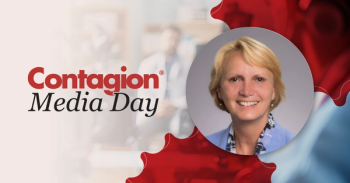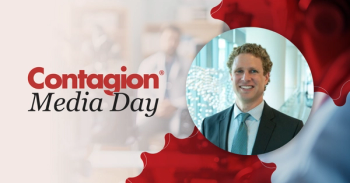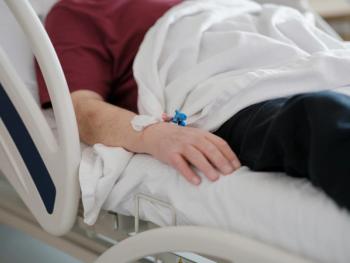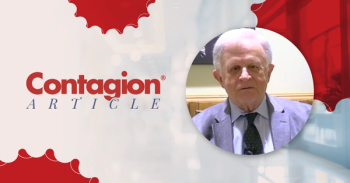
Meeting Patients Where They Are: Hepatitis C Barriers in Pharmacy Practice
Ty Stoner of Walgreens Specialty Pharmacy on navigating barriers, building partnerships, and improving access for vulnerable populations.
In a recent phone interview, we spoke with Ty Stoner, a certified pharmacy technician and pharmacy operations manager at Walgreens Specialty Pharmacy in Pennsylvania. Stoner oversees daily operations and protocol development at a site focused on treating complex disease states, including hepatitis C. With a patient-centered approach, his team manages everything from refill coordination and symptom check-ins to navigating financial assistance. Drawing on his frontline experience, Stoner shared valuable insights into the barriers faced by patients with hepatitis C, particularly those who are unhoused or marginalized, and the practical solutions that help close critical gaps in care.
Contagion: From your perspective on the front lines, what are some of the most common barriers—beyond cost—that prevent patients with hepatitis C, especially unhoused or marginalized populations, from initiating and/or completing treatment?
Stoner: “Initiation is definitely a really difficult step. Most specialty pharmacies that are prestigious specialty pharmacies hold a special accreditation called URAC accreditation, and they hold us to a standard where we have to have a phone call at the beginning with the patient and we have to have a phone call with the patient during every single refill.
“When we're trying to reach out to patients who are unhoused or people who are just underprivileged, it's really hard to get those calls done timely and effectively so that they're not having huge gaps in therapy or even initiating therapy.
“Sometimes people come back with these huge co-pays that are all their out-of-pocket costs at once the first time they're getting it filled, which can be a huge hurdle to overcome. Not as big of an issue with unhoused individuals, because the social workers we work with at the rehabilitation [facility] we're close with really set them up with some sort of Medicaid that really does help with co-pays.
“A regular barrier we also hit here is just confusion and frustration on the patient’s behalf on how long the process can take—sometimes when we're talking about prior authorizations with insurance. Just a lot of confusion around maybe their condition itself, a lack of education, and safe storage of medication. We have a lot of patients who will end up losing their medication when they're moving from facility to facility when they are unhoused, and that also creates huge gaps in therapy for those patients.”
Contagion: Can you describe how some specialty pharmacies such as yours collaborate with community organizations, rehabilitation facilities, and social workers to identify and engage with patients who might fall through these cracks?
Stoner: “Our really big partnership with a rehabilitation [facility] in West Virginia started a little over a year ago now. Our protocol here—or one that we follow—is we try to call the patient 3 times. And if we're not able to get a hold of them, we reach out to the provider. I reached out to this provider office, and the social worker there was sharing with me all of her problems with getting her patients started on these medications.
“We found a form that is both URAC approved and Walgreens approved that allows the doctor's office to perform those phone calls for the patient. So part of them sending in those scripts includes this permission form signed by the patient that allows the office to handle all of the clinical side with the pharmacy.
“That’s really helped us close gaps and meet the patients where they are. For this office particularly, we started applying that to other locations too when it's needed. They had a backlog of 40 patients who just weren't receiving therapy because no other pharmacy had offered to do something like that. A huge group of people were able to be served.
“Walgreens has a lot of access to nonprofit organizations that offer grants for patients. HealthWell and the PAN [Patient Access Network] Foundation are two that come to mind. They have specific grants for people with hepatitis that can cover huge amounts of financial burden—upwards of $10,000 in a calendar year.
“They do have wait lists, which can be a frustrating point for patients, but in order to get the patient to a point where they can financially afford it, it really helps overcome that hurdle.
“Our pharmacists really do a wonderful job educating and stressing the importance of adherence and how successful these medications can be if patients are being adherent. It's a great feeling whenever you get medications to patients that are so frustrated because they just haven’t been able to get them.”
Contagion: Given the high efficacy of direct-acting antivirals, what changes in policy or public health outreach do you think are some of the most urgent needs to close the treatment gap and reduce hepatitis C–related complications?
Stoner: “I definitely think it's the length at which prior authorizations take, especially when we get into appeal processes. That’s really, at our location, the place where people are hitting the biggest struggle.
“A lot of these patients, especially those who are unhoused, are moving around a lot. When an office has them in person at a point in time, everything needs to happen a lot faster than it currently can, especially when we’re reinitiating therapy.
“It’s really disheartening to see patients step away and be like, ‘Well, the system’s not made to help me,’ when it is—it’s just that you have to have a whole team that’s willing to put in the time and effort to make sure they're getting those medications.
“Working so closely with this site, having a social worker that I can call directly and talk to, [and] talking to the providers regularly just helps that process go so much smoother. And it really meets the patient exactly where they’re needed.
“We do a lot of delivery right to the office now instead of to the patient so they can monitor the patient’s medications, get them the refills a week at a time, so they’re constantly checking in with the patient on adherence.
“The small things like that—where we’re really engaged and really focused—and making that more of an across-the-spectrum thing rather than individual pharmacies going and doing that extra mile would just help patient outcomes so much.”
Stoner closed the conversation by emphasizing the importance of meeting patients where they are and providing consistent, compassionate support throughout the treatment process. He expressed gratitude for the opportunity to make a meaningful impact through his role at Walgreens, noting that both the pharmacy team and partnering clinics are already seeing positive outcomes. “I’m excited to just keep going and see how it gets better,” he said.
Newsletter
Stay ahead of emerging infectious disease threats with expert insights and breaking research. Subscribe now to get updates delivered straight to your inbox.




